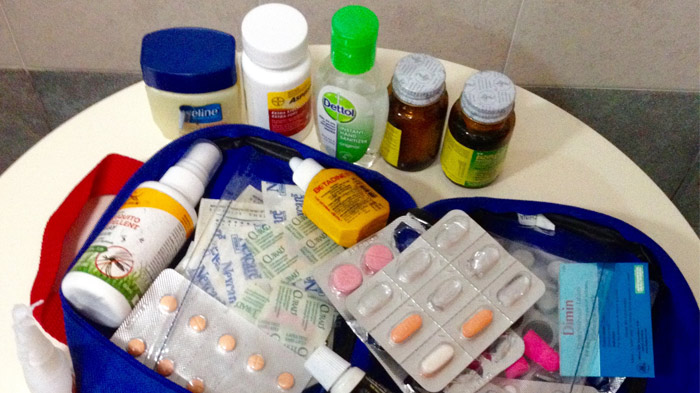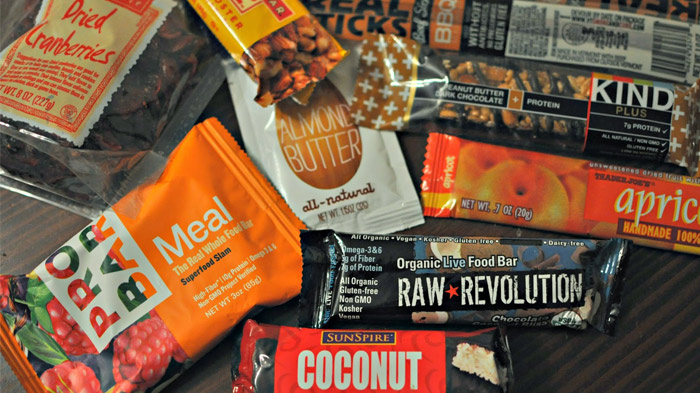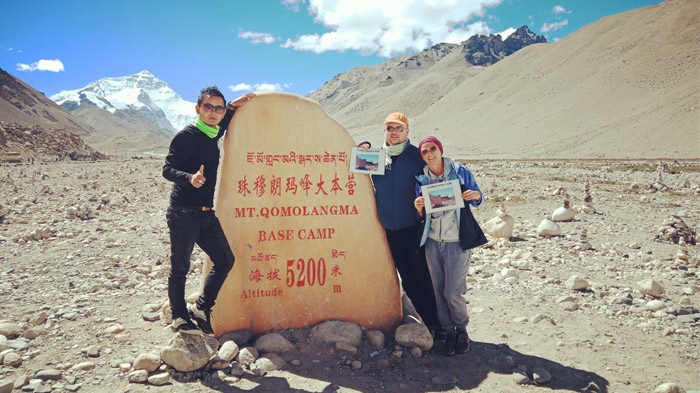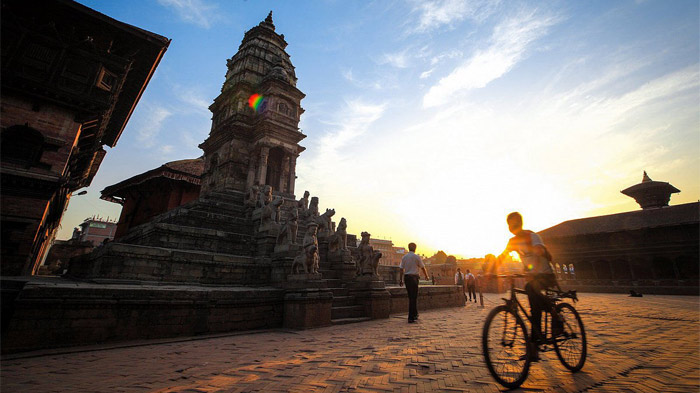
What to Pack for Tibet Travel
Deciding what to pack is not always easy, especially packing for the travel to the highest region in the world.
However, Tibet is not a place with unbearably bad weather which you might have probably misunderstood before, rather, most of the time in Tibet is fine with comfortable temperature and fresh air.
So, you don’t have to pack too many things, better not to exceed the luggage weight that the airline specifies. Normally, you are allowed to carry one bag with the baggage allowance no more than 20 kilogram/44 pounds and two carry-on bags with each weighing up to 5 kilogram/ 11 pounds for the airlines in China.
Just follow our ultimate packing list below to make sure you prepare the must-have things in advance and ensure you a worry-free tour in Tibet.
1. The Basic Packing Items/ Must-have Items for a Tibet Tour
2. What are Our Recommended Items for a Tibet Tour
3. What are the Items You Don’t Have to Put on Your Packing List
4. What Else to Pack for Tibet Trekking Tours
5. What Else are Recommended to Pack For Everest Base Camp Tour
6. The Climate of Kathmandu and What to Pack If Head to Kathmandu after Tibet Tour
7. What Else are Recommended to Pack for Namtso Lake Tour
8. What to Pack for Mount Kailash Tour
The Basic Packing Items/ Must-have Items for a Tibet Tour
Identifications
Passport and Chinese Visa: Never forget your original passport and Chinese Visa. Besides, firmly recommend to back up your passport and visa in digital forms or print more copies for some emergency uses.
Tibet Travel Permit: Typically, we deliver your Tibet Travel Permit to the city from where you enter to Lhasa. (Check how to get your Tibet travel permit in China here.) If the Tibet Travel Permit has already been sent to your country based on your requirement, be sure enough to pack it first.
Bank Cards and Enough Cash: Cashes can be withdrawn everywhere in Lhasa, but it’s better to prepare some in advance. Usually 80RMB-150RMB per day is the basic cost (usually just for meals) in Tibet.
Clothing, Shoes and Bags
T-shirts: Bring more T-shirts (4-5 short sleeves and long sleeves) to cope with the daily changing temperature;
Sweaters: 2-3 sweaters are recommended, for layers of them can be much warmer and easy to be taken off when the temperature bounces back to a higher level (For staying overnight outdoor at a comparatively higher elevation, make one of them thick);
Hoodie, fleece, long sleeve jacket or windbreaker: 1 hoodie, at least one 1 fleece and 1 long-sleeve jacket or windbreaker are recommended for any time of the year to have a Tibet tour.
Thick down jacket or insulated jacket: A down jacket or an insulated jacket is indispensable especially when you take an Everest Base Camp tour or plan to visit Ngari Prefecture like Kailash Mansarovar area, or you decide to have an extraordinary tour in Tibet winter during December, January and February.
Windproof pants: It is the pants that are most likely to get stained during your Tibet tour, so make 3-4 water and windproof pants prepared in advance is no doubt the wisest choice.
Underclothing: Preparing 4-5 quick-dry and breathable underclothingmakes your tour much comfortable;
Waterproof gears: Waterproof clothing (Mainly a raincoat or a poncho), rainproof jacket, rainproof pants, gaiters and bag-covers are useful when tour in Tibetan monsoon months of July and August.
Sports footwear or climbing shoes: A comfortable and durable pair of sport shoes can do the trick in most of the occasions. In addition, a comfortable climbing shoes with one size larger than your feet is also recommended if you plan to take a trek tour or travel to some remote areas with high elevations.
Breathable socks: Prepare 4-5 pairs of socks to make your feet more comfortable while walking.
One backpack and no more than twosmall bags: Choose a high-quality comfortable backpack with the total capacity no more than 50L. Meanwhile, you can fill the smaller ones with digital devices including your notebook and camera;
Personal Hygiene
Toiletries: Accommodation provided at most attractions like Mount Kailash, Mansarovar Lake, Namtso Lake, Everest Base Camp, etc. are almost budget houses orguestrooms without independent toilets, while all most all the public toilets do not provide toilet papers and hand washing liquid.
So your personal toiletries including wet wipes, toilet papers and hand sanitizer are definitely the must-have items you need to pack in advance.
Photo Gears
Camera or video camera: Don’t forget to put a camera into your bag and document the stunning beauty of Tibet.
.jpg) A sample of basic packing (must-have) items for Tibet tour.
A sample of basic packing (must-have) items for Tibet tour.
What are Our Recommended Items for a Tibet Tour
Moisture and sunscreen: Due to the intense sunshine and dry weather in most areas of Tibet, moisture and sunscreen can effectively keep you from UV radiation and effectively keep you from the sunburnt.
Sunhat and sunglasses: No matter a city-tour or the trekking exploration, Sunhat and sunglass are the necessary items to keep you from sun-scotching;
Flashlight: Very useful when you are going to the public toilet at night at some tourist attractions like Namtso Lake, Mount Kailash or Mansarovar Lake;
Tripod: To get a satisfactory photo or shoot the starry night, you need to prepare a light but steady tripod which can be fixed firmly and deal with the wind.
Standby batteries: Ensure the constant power supply of your digital equipment;
Camera memory cards: An extra memory card leaves you much room for documenting Tibet sceneries.
Phone international roaming service: Get your phone international roaming enabled, for some Wi-Fi provided at attraction accommodations are unavailable. If you want to share anything of your tour in Tibet simultaneously with your family or friends, you are recommended to do so.
Snacks and dried fruits: Pack some snacks or buy some local snack foods and fruits on the way to make your journey more enjoyable.
Recommended Medicines:
1. Ibuprofen sustained-release capsule: Deal with fever and headache caused by altitude sickness
2. Diamox: Alleviate acute altitude sickness (Or GaoYuanan: A kind of Chinese medicine which has the same curative effect and widely used among domestic tourists; available in almost every drugstore in Lhasa)
3. Diphenoxylate: The meperidine congener used as an anti-diarrheal
4. Nasal ointment and throat lozenges: Smoothen your discomfort when you are suffering from a changing weather
5. Quick Acting Heart Reliever: In case of an emergency
6. Multi-Vitamins
7. Contact lenses solutions: If you wear contact lenses, make sure to bring enough contact lenses solutions since they are hard to find and expensive.
 It is important to bring some essential medicines in case you get sickness at high altitude.
It is important to bring some essential medicines in case you get sickness at high altitude.
1. It is recommended to consult your doctors for further instructions before you set foot on Tibet, if you live in a low altitude areas and has never been to any place with altitude more than 3500m.
If you don’t feel very well in Tibet, please be sure enough to tell our tour guide immediately. Your health and safety are always of the utmost importance.
2. Most of the over-the-counter medicines such as aspirin and anti-diarrheal pills are available in major cities like Lhasa but they are more difficult to be obtained outside the urban areas.
3. If you wear contact lenses, make sure to bring enough contact lenses solutions since they are hard to find and expensive.
What are the Items You Don’t Have to Put on Your Packing List
Oxygen Bag: No need to packoxygen bags before you go to Tibet. We have prepared the oxygen bags on the tourist bus. We take a blood oxygen content measurement to ensure every traveler’s health condition. Besides, oxygen bags are obtainable in most of the attraction stores and cities.
Sleeping bag: We can provide the clean sleeping bags, and you can rent one at the very low price, however, if you do not get used to it, you can also bring your own sleeping bags to enjoy a sound sleep.
Water Bottle: We dispatch tiny bottles to every visiter with Tibet Vista printed on the body. A vacuum flask enable you to drink some hot water on the way or you can make some coffee or a cup of tea to alleviate the altitude sickness.
Hand warming slot: Upon your request, we provide you with a hand warming slot to protect you against the coldness, especially in winter, do the trekking or heading for some cold places like Everest Base Camp, Namtso Lake and Kailash Mansarovar areas. Consult directly to our professional travel consultant, so we can prepare it for you in advance.
What Else to Pack for Tibet Trekking Tours
What are other necessary gears we need to prepare in advance for a Tibet trekking tour besides the must-have and recommended things.
Band-Aid, eye drops, cotton wool, gauze and bandage: Longtime walk makes blisters on your feet, prepare the Band-Aid to smooth the pain. For the trauma or injury, some external drugs do really help.
Flasks and drinking bottles with hydration system: Replenish your body of drinking water without taking the bottle out while walking.
Small telescope: Bring a small and light telescope to observe animals by the lake or on the mountain.
High-calorie food: High-altitude and longtime trekking sometimes cause visitors losing their appetite. Bring some dry snacks like air-dried beef, chocolate, mixed dry fruits, nuts, dates, biscuits, energy bars, etc. as the supplementary food. Take them constantly when you have rests on your trekking road.
Portable garbage bag: More convenient to handle the garbage and more effective to protect the environment.
Handwarmer: If you stay overnight outside in guesthouses, budget rooms or even in the tents, hand warmers always work (Air-activated warmers are recommended).
Quick-dry towel: Tibet sunny days are always accompanied by strong sunshine and higher felt temperature, a quick-dry towel can effectively prevent your face and body from drenched in sweat for a long time.
Neckband: Keep your neck from getting burnt by the strong sunlight.
Thin plastic bag: Pack your changed underclothing, sockets and other dirty clothes and pants.
 Bring some high-calorie food with you for energy supplementary
Bring some high-calorie food with you for energy supplementary
We provide helpful rental services including trekking poles, camping lanterns, and portable chargers. Meanwhile, upon your request, we can also provide you with clean and warm sleeping bags and camping tents. If you do not get used to the sleeping bag we serve, try to bring a high-quality one since the guesthouses at Everest Base Camp or Rongbuk Monastery grow really cold at night.
What Else are Recommended to Pack For Everest Base Camp Tour
With the altitude ascending to 5200m, the temperature varies considerably, so besides the must-have and recommended things, you also need to consider the following gears to be packed in advance.
 Photo of our guests taken at Everest Base Camp with their tour guide.
Photo of our guests taken at Everest Base Camp with their tour guide.
High-calorie food: Energy-giving food can provide you with more heat to withstand the cold, so cereal nuts, chocolates, raisins, energy bars etc. are good options for packing
Handwarmer: If you stay overnightin guesthouses, budget rooms or even in the tents, hand warmers always work really well (Air-activated warmers are recommended).
Fill-in light flashlight: The starry night at Everest Base Camp is stunning, so a torch which can give the fill-in light do help you get a satisfactory photo at the Everest Base Camp.
Neckband: Keep your neck from getting burnt by the strong sunlight.
Gloves: The temperature falls dramatically at night and if you plan to stay over at Everest Base Camp or Rongbuk Monastery, a pair of fleece material made gloves can effectively protect you against the chilly air even in the July and August.
We provide every visitor with the brand-new telescope (With 60 optical zoom lens) which gives a close-up view of Mt. Everest at BEC. For more useful multiple travel kits, refer to the value added column on the website.
Besides, We recommend a digital camera and a high-quality tripod since the air-condition changes a lot during the base camp tour.
The Climate of Kathmandu and What to Pack If Head to Kathmandu after Tibet Tour
The climate in Kathmandu bears little similarity with it in Lhasa. The temperature maintains at a comparatively higher level all the year round, so you can travel there anytime you like in a year. However, you still need to pay some attention to months from May to September, for the temperature increased to almost 30℃ with a large quantity of precipitation.
May: Max. Temperature 28℃(82.4℉); Min. Temperature 15.8℃ (60.4℉); Rainfall: 116mm
June: Max. Temperature 28.1℃ (82.6℉); Min. Temperature 19.1℃ (66.4℉); Rainfall: 252mm
July: Max. Temperature 27.2℃ (81℉); Min. Temperature 20℃ (68℉); Rainfall: 379 mm
August: Max. Temperature 27.2℃ (81℉); Min. Temperature 19.7℃ (67.5℉); Rainfall: 334mm
September: Max. Temperature 26.2℃ (79.2℉); Min. Temperature 18.1℃ (64.6℉); Rainfall: 212mm
 Warmer climate in Kathmandu can be found all the year round with the temperature maintained at a comparatively higher level
Warmer climate in Kathmandu can be found all the year round with the temperature maintained at a comparatively higher level
The rainfall months are mainly from May to September in Kathmandu. Besides these months, precipitation turns to be very little (No more than 30mm per month).So if you travel Kathmandu during the above months, make sure the rainproof gears are fully packed.
When you finish your tour in Tibet and head for Kathmandu, you are recommended to pack the following helpful things in advance. Follow us to see what else to pack before you set foot on Nepal besides the must-have items and recommended things you have packed for Tibet travel.
Long-sleeve shirt: Comfortable and can be worn with any top and pant
Cardigan: Necessary option to whatever the outfit you plan to wear
Long skirt: Long skirt with layer leggings under it can be comfortable
Loose trousers: Like harem pants or the parachute pants
Scarf: a silk scarf like bandanna prevents you from the sunshine while the fleece material scarf protects you against the cold. (Recommend to buy in local shops according to your time you travel)
Sandal: Besides the shoes you prepare for the Tibet travel, you can also pack a pair of sandals for the comfortable Kathmandu city tour.
Winter hat and gloves: If you travel Kathmandu during the months from November to March, no matter you stay outside or not, pack these two things for the nippy morning and night.
Headlamp: You may constantly encounter a blackout during your stay in Nepal, for the household electricity is typically generated by the hydraulic power. A headlamp is helpful to navigate your way to anywhere you are heading for.
Voltage converter or adapter: Almost all the sockets are made to suite C & D adapters, so try packing a small adapter to ensure the charge for your digital devices.
Portable charger: Due to the unstable power supply, a portable charger is indispensable wherever you travel in Nepal.
Refillable water bottle with built-in filter: Running water in Nepal cannot be drunk directly. To prevent from diarrhea, pay more attention to the drinking water provided in Nepal by packing the water bottle with a filter in it.
Rain-proof gears: Waterproof phone case, document pouch as well as a travel-sized umbrella are very useful in rainy day.
Deodorant: Needed when some places have unpleasant smells.
1. You also need to prepare the paper and digitalcopies of your passport, visa, and all necessary identifications in advance, for you have no idea whenever they are needed.
2. Accommodations like guesthouses and budget rooms are no better than these provided at some of the attractions in Tibet, so get your personal toiletries fully prepared.
3. If you have not opened the phone international roaming service which we recommended above, then you have to send pictures or messages when the Wi-Fi is connected. Many hotels in Nepal has Wi-Fi connecting problems, so we recommend you to buy a SIM card upon your arrival at the hotel.
4. Follow the Nepal customs by not wearing low-cut clothes or pants, not behaving intimately with your partner in public places and not throwing sundries and trashes into the fire.
What Else are Recommended to Pack for Namtso Lake Tour
Namtso Lake is prominent for its surreal beauty in Tibet and around the world. With the altitude of 4718m (15,479 feet) and the dramatically varied climate, one night stay at the lake needs a thorough consideration for packing. Besides the must-have and recommended things we have mentioned above, what else do we need to pack in advance? Just follow us to find them out.
 Thorough considerations are needed for the packing for a one night stay at Namtso Lake
Thorough considerations are needed for the packing for a one night stay at Namtso Lake
Headlamp: A headlamp is helpful to navigate your way to anywhere you are heading for.
Neckband: Keep your neck from getting burnt by the strong sunlight.
Vacuum cup: Drinking more hot water is helpful for relieving the altitude sickness
High-calorie food: Energy-giving food can provide you with more heat to withstand the cold. Prepare some cereal nuts, chocolates, raisins, energy bars etc.
Handwarmer: If you stay overnight in guesthouses, hand warmers always work really well (Air-activated warmers are recommended).
Winter hat and gloves: Temperature drops sharply at night even in hot months from June to September, accompanied by the howling wind. So if you are heading for the public toilet or just strolling at night, nothing better than a winter hat can effectively prevent you from catching a cold.
Nagenla Pass, on the only road to Namtso Lake from Lhasa, has a high altitude of 5190m. Bus vehicles usually make a short-time stop here for travelers to take photos. The rapid rise of height makes the oxygen content tend to be weak. So do not exert yourself like chasing around or jumping when arriving at Nagenla Pass. Do not make grand or exaggerated gestures when doing the photo-shooting. Relax the body, breathe smoothly and put on more clothes to keep warm.
What to Pack for Mount Kailash Tour
If you decide to take a Kailash tour, refer to this article for more detailed information about all the things you need to pack for a Kailash tour in Tibet.
What’s the Elevations and Climates in Tibet
Tibet consists of seven prefectures with the altitude decreasing from the west (Ngari, Nagqu and Xigazê Prefectures) to the east (Qamdo, Nyingchi, and Shannan Prefectures) through the medium elevation area—Lhasa. But in medium and low altitude areas, some attractions are also located at high altitude places (like Namtso Lake 4718m near Lhasa 3490m). On the whole, Tibet is the highest region on earth, with an average elevation of 4,900 meters (16,000 ft). Climate changes mainly due to the variation of altitudes and Tibet seasons.
The climate varies moderately from the lower land (Attractions located in Nyingchi Prefecture, Shannan Prefecture and Chamdo Prefecture) to the medium altitude areas (like Lhasa and Shigatse) and continues to ascend to the higher land (spots located in Ngari Prefecture and Nagqu prefectures). Places with lower altitude such as Nyingchi and Lulang have comparative moderate weather with less strong sunshine, easily adaptable temperatures, and abundant oxygen content while in high-altitude attractions, the air oxygen content becomes comparatively thinner, accompanied by decreased temperature.
The higher the elevation, the lower the temperature will turn to be, and the wind will get stronger. So adjust your packing list accordingly.
Conclusion
In conclusion, the lighter you travel, the better your journey will be. Our picking suggestions for the Tibet travel are summarized as follows:
1. Try not to make your luggage exceed the baggage weightlimit which is regulated by the airlines.
Officially, the baggage allowance should be no more than 20 kilogram/44 pounds and two carry-on bags with each weighing up to 5 kilogram/ 11 pounds
2. Basic packing items are the must-have items you need to pack in advance no matter wherever you travel in Tibet.
Paper and digital copies of Passport, Chinese Visa and Tibet Travel Permit, bank cards, 1 backpack and no more than two small bags, 4-5 short and long sleeve T-shirts, 2-3 sweaters, 1 hoodie, at least 1 fleece, 1 long-sleeve jacket or windbreaker, 1 thick down jacket or insulated jacket, 4-5 windproof pants,3-4 waterand windproof pants, 4-5 quick-dry and breathable underclothing, Waterproof gears, Sports footwear or climbing shoes,4-5 pairs of socks, toiletries including wet wipes, toilet papers and hand sanitizer, camera or video camera
3. Recommended items are things we firmly recommend you to take during your Tibet tour.
Moisture and sunscreen, Sunhat and sunglasses, Flashlight, Tripod, Standby batteries, Camera memory cards, Phone international roaming service, Medicines
4. Items you don’t have to put on your packing list
Oxygen bag and Sleeping bag: We provide the rental services for you. A small amount of service and cleaning charge is expected.
If you still have any questions about what to pack for your Tibet tour, please don’t hesitate to drop us a line underneath for the detailed information.

The Lhasa-born prodigy used to study business overseas, and got his Bachelor of Business in Nepal and India before moving back to his homeland. With pure passion for life and unlimited love for Tibet, Kunga started his guide career as early as 1997.
Responsible, considerate, and humorous, he devoted his entire life to guiding and serving international tourists traveling in Tibet. As a legendary Tibetan travel guru with 20-year pro guide experience. Currently, he is working in Tibet Vista as the Tour Operating Director. Whenever our clients run into trouble, he is your first call and will offer prompt support.


.jpg)




0 Comment ON "What to Pack for Tibet Travel"